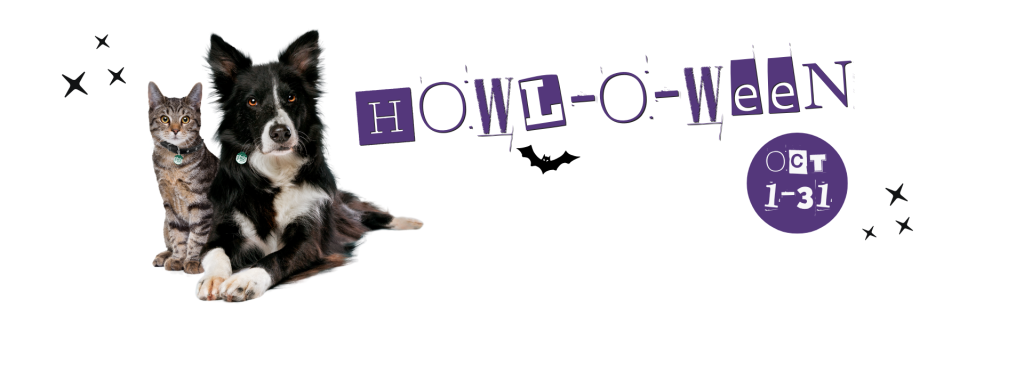Local Adoption Initiatives: How Communities Are Making a Difference in the Lives of Animals

Local Adoption Initiatives: Transforming Lives in Our Communities
Across the United States, local adoption initiatives are reshaping the landscape for animals in need. With over 3.3 million dogs and 3.2 million cats entering shelters each year, communities are stepping up to make a significant impact. These initiatives vary in scope and structure but share the common goal of improving the lives of animals and reducing the number in shelters.
These grassroots efforts are not just about finding homes. They emphasize:
- Community Engagement: Residents join forces to promote animal welfare. Local businesses often collaborate with shelters, donating funds or services to support adoption events. For example, pet supply stores may host adoption days, providing a venue for shelters to showcase animals looking for homes. Community members also volunteer their time for walks, fundraisers, and educational workshops, which fosters a stronger bond among residents and encourages civic responsibility.
- Education: Programs educate the public on responsible pet ownership. Many local initiatives include workshops that teach essential skills like training techniques, proper nutrition, and the importance of regular veterinary care. By informing potential adopters, these programs not only help in finding homes for pets but also ensure that adopters are well-equipped to provide lifelong care.
- Support Services: Many initiatives provide low-cost spay/neuter programs. This proactive approach helps control the animal population and reduces the number of unwanted pets entering shelters. For example, initiatives in cities like Los Angeles and Austin have implemented affordable clinics that serve low-income families, making pet sterilization accessible to all.
Success stories abound, showcasing the power of local partnerships between shelters, businesses, and volunteers. For instance, the national initiative “Clear the Shelters” has mobilized hundreds of shelters across the country to waive adoption fees for one day, leading to thousands of animals finding loving homes in a matter of hours. This movement has demonstrated that concerted community efforts can yield remarkable results.
Moreover, the rise of social media platforms has amplified these efforts, making it easier for communities to spread the word about adoptable pets. With just a few shares and likes, a single story can change the fate of an animal waiting for a forever home. Viral posts about pets can lead to increased adoptions, as seen during campaigns like #AdoptDontShop, which encourage users to consider adoption over purchasing pets from breeders.
As we delve deeper into these local adoption initiatives, explore how your community can join the movement to make a difference in the lives of animals. Discover innovative approaches such as mobile adoption units that bring pets to urban centers, or community art projects that raise awareness about animal welfare. Inspiring triumphs in cities across the nation shine a spotlight on the compassion citizens have for these vulnerable animals, illuminating the path toward a brighter future for both pets and people alike.

LEARN MORE: Click here to find your perfect pet!
Innovative Approaches to Animal Adoption
As communities across the nation unite to champion the cause of animal welfare, a growing number of local adoption initiatives are emerging, showcasing creativity and determination in the fight against pet overpopulation and abandonment. By addressing the fundamental barriers that often prevent successful adoptions, these initiatives are making what once seemed impossible, achievable. Here, we explore some of the most innovative approaches that communities are implementing to change the lives of animals and their potential adopters.
One of the most effective strategies has been the establishment of community-based adoption events. These events bring together local shelters, foster homes, and potential adopters in a vibrant, engaging environment. Activities such as pet cafes, outdoor festivals, or pop-up parks not only create a fun atmosphere but also allow future pet owners to interact with adoptable animals in a friendly setting. For instance, the “Pet Adoption Day” in Richmond, Virginia, draws large crowds by partnering with local breweries and food trucks, expanding the audience beyond traditional animal lovers.
Moreover, technology plays a pivotal role in enhancing the visibility of animals in need of homes. Local shelters have started utilizing mobile apps and websites that spotlight adoptable pets with engaging photos, videos, and detailed descriptions. This digital outreach has proven crucial in connecting with a younger, tech-savvy demographic who may not engage with traditional advertisements. For instance, the “Adopt a Pet” app simplifies the search for potential adopters by allowing users to filter pets based on breed, age, and size, making the process both accessible and streamlined.
Furthermore, partnerships with local businesses, nonprofits, and educational institutions can lead to transformative results. These collaborations leverage resources and reach a broader audience, ultimately enhancing adoption rates. Common partnership strategies include:
- Pet Wellness Events: Local veterinarians often collaborate with shelters to provide no-cost health checks, vaccinations, and spay/neuter services during adoption drives, addressing potential adopters’ concerns about the immediate costs of pet ownership.
- Community Education Programs: Schools can host initiatives that allow students to learn about animal care, including responsible adoption practices. Some schools have even created service-learning projects that focus on animal welfare, inspiring young advocates for adoption.
- Social Media Collaborations: Local businesses frequently use their platforms to share adoptable animals’ stories, increasing community engagement. By offering discounts or rewards for pet adoptions, these businesses also create an incentive for people to consider adopting.
These local adoption initiatives not only address the immediate need for homes for animals but also foster a culture of compassion and responsibility towards pets in the community. They provide lasting solutions that extend beyond the act of adoption, ultimately creating a more informed and engaged society. The implications of these innovations can ripple through communities, leading to comprehensive improvements in how we perceive and support animal welfare.
| Advantage | Description |
|---|---|
| Increased Awareness | Local adoption initiatives result in higher community engagement about animal welfare issues. |
| Stronger Community Bonds | These programs foster connectivity among residents, building a compassionate network advocating for animals. |
| Healthier Animal Population | Adoption initiatives can lead to a reduction in shelter overcrowding, ensuring better health and care for animals. |
| Support for Local Shelters | They provide essential resources to local shelters, such as food, funding, or volunteer support. |
These local adoption initiatives are pivotal in reshaping how communities perceive and support animal welfare. They not only streamline the adoption process but also create an ecosystem where people and pets can thrive together. As neighborhoods rally around these causes, educating one another about the responsibilities of pet ownership and the importance of rescue, they see a direct positive impact on the lives of countless animals. By participating in community-driven programs, residents become champions of change, ensuring that every animal finds a loving home. In addition, these initiatives are known to spread awareness about pet care, grooming, and medical needs, which in turn leads to more informed pet owners. This holistic approach not only benefits animals directly involved in adoption but also nurtures a general culture of compassion towards all animals in the community. Adopting an animal is no longer just a transaction; it signifies a commitment to a better future for all pets within the community. As more cities adopt these progressive measures, the ripple effect can be felt beyond municipal boundaries, inspiring others to take action for the sake of animal welfare.
DON’T MISS: Click here to discover vital mental health techniques for your pets
Strengthening Community Networks for Lasting Impact
In addition to creative adoption events and technological innovations, successful local adoption initiatives often thrive on building and strengthening community networks. These networks create a supportive ecosystem around animal welfare, which is essential for improving adoption rates and ensuring that pets find their forever homes. By fostering collaboration between various stakeholders, communities are not only changing the narrative around pet adoption but also enhancing the overall welfare of animals.
One highly effective approach is the implementation of foster care networks. This strategy involves recruiting volunteers from the community to temporarily house animals until they are adopted. Foster homes provide essential socialization and training for pets, which can significantly increase their chances of being adopted. Programs like Fostering Hope in Los Angeles have seen remarkable success, with a 70% higher adoption rate for animals that have been in foster care compared to those that remain in shelters. These networks also help alleviate overcrowding in shelters, giving animals a better quality of life while waiting for their new families.
Moreover, many communities employ the use of mentorship programs to pair experienced adopters with first-time pet owners. This unique initiative not only supports new adopters through their initial adjustment period but also emphasizes responsible pet ownership practices. Through mentorship, communities create lasting connections between individuals, leading to a more informed and compassionate approach to pet care. For example, the Animal Welfare League of Arlington, Virginia, has seen a notable decrease in pet return rates thanks to its mentoring system, as many new pet owners feel empowered and knowledgeable with the help they receive.
Education, too, plays a fundamental role in these community initiatives. An increasing number of free workshops and training seminars are being offered by local shelters and animal welfare organizations, covering topics ranging from pet behavior and training to the importance of spaying and neutering. These programs are designed to engage various demographics, including families, seniors, and young adults, effectively raising awareness about the responsibilities associated with pet ownership. Research indicates that communities with robust educational outreach see not only an increase in adoptions but also a significant decline in return rates, as potential pet owners are better prepared for the challenges and joys that come with caring for an animal.
Social media has also emerged as a powerful tool in these community networks. Creative campaigns, such as the #AdoptDontShop movement, have spurred viral attention, encouraging people to adopt rather than purchase pets. Local shelters leverage this by posting heartwarming success stories, time-sensitive events, and profiles of pets available for adoption, effectively creating buzz and increasing visibility. According to a report from the American Society for the Prevention of Cruelty to Animals (ASPCA), communities that actively use social media for advocacy see a significant increase in adoption rates, reinforcing the critical role online platforms play in modern adoption initiatives.
Ultimately, community-focused strategies empower ordinary citizens to play an active role in improving the lives of animals in their neighborhoods. By working together, communities not only enhance the adoption process but also cultivate a deep-rooted sense of responsibility and care for animal welfare, fostering an environment where both pets and people can thrive.
DISCOVER MORE: Click here to learn about the importance of consistency in pet training
Conclusion: A Collective Commitment to Change
As we explore the transformative power of local adoption initiatives, it becomes abundantly clear that communities across the United States are stepping up in meaningful ways to create a brighter future for animals in need. By fostering a network of collaboration through foster care programs, mentorship opportunities, and educational outreach, these communities are not only increasing adoption rates but are also enhancing overall animal welfare. The innovative strategies employed—ranging from the use of social media to spread awareness to hosting engaging local events—demonstrate a collective commitment to change.
Moreover, the success of these initiatives highlights the importance of community involvement in shaping how we view and care for our animal companions. Engaged citizens not only help reduce shelter overcrowding but also drive down return rates through enhanced understanding and responsible pet ownership. Whether it’s through volunteering time, sharing resources, or simply spreading the word, everyone holds the potential to make a significant difference.
Ultimately, the landscape of pet adoption is evolving, and communities are leading the charge in redefining the narrative around animal welfare. For those inspired by these initiatives, there are countless ways to get involved, whether through local shelters or grassroots organizations. As we continue to advocate for our four-legged friends, let us remember that every action counts and that together, we can create lasting change—one pet adoption at a time.


